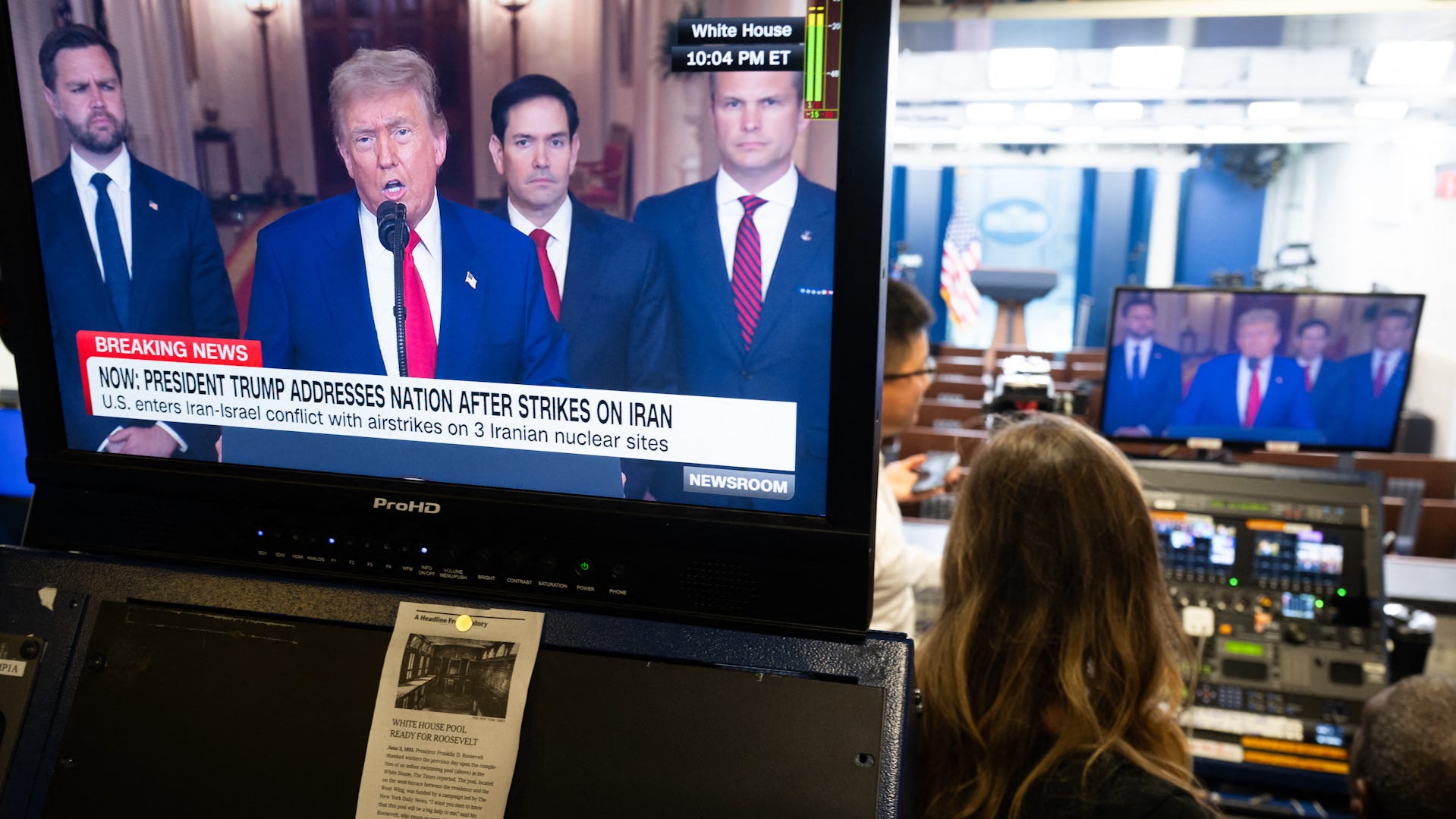The U.S. helped oust an Iranian regime before. Here’s what happened in 1953.

Corrections & Clarifications: A previous version of this story misstated which entity acknowledged the United States' role in the 1953 Iran coup.
In the days following the U.S. strikes in Iran, President Donald Trump has threatened to depose Iran’s leader and institute a regime change, igniting debates over interventionism and resurfacing memories of the last time America helped topple a government in Iran decades ago.
“It’s not politically correct to use the term, ‘Regime Change,’ but if the current Iranian Regime is unable to MAKE IRAN GREAT AGAIN, why wouldn’t there be a Regime change??? MIGA!!!” Trump wrote in a Truth Social post on June 22.
Trump’s post came after officials in his administration, including U.S. Vice President JD Vance and Defense Secretary Pete Hegseth, took much different tones, saying they were not working to overthrow Iran’s government and do not want a regime change. As next steps remain unclear, the specter of American involvement in a plan to depose the Iranian regime raises immediate comparisons to Iran’s 1953 coup, when American and British intelligence agencies aided in the forced removal of a democratically elected leader.
While the current crisis is a far cry from the domestic and international events surrounding the 1953 coup, talk of regime change evokes memories of the U.S.-backed operation that had far-reaching effects in Iran and across the region more than 70 years ago. Here’s what to know about what happened then.
Iran and the U.S.—were they always adversarial?
As the Cold War took hold in the 1950s, Washington relied on Iran’s reigning Shah to help stem Soviet influence spreading further in the oil-producing Middle East. The British had relied on nearly unfettered access to the Iranian oil industry via the Anglo-Iranian Oil Company, later to become BP.
But Shah Mohammad Reza Pahlavi and his monarchist rule were growing unpopular at home among Iranians, and in 1951, Mohammad Mossadegh was elected as prime minister. Shortly after, he nationalized Iranian oil production in a bid to reclaim the country’s oil industry and profits from significant foreign control.
What led to the 1953 coup in Iran?
Britain, shut out from Iranian oil, leaned on the U.S. for assistance. The American government at the time worried that Mossadegh’s government signaled an end to Western footholds in the region in the face of Cold War-era anxieties and the USSR’s push to expand its influence.
In 1953, the CIA and MI6 orchestrated the overthrow of Mossadegh in ‘Operation Ajax,’ led by senior officer Kermit Roosevelt Jr., grandson of U.S. President Theodore Roosevelt. It led to the overthrow of Mossadegh, who went on trial and was sentenced to house arrest, and restored and centralized power to Pahlavi. He would become the last Shah of Iran.
The U.S. government in 2013 officially acknowledged the U.S.’s role in the coup when it released declassified CIA documents on the operation.
“The 1953 coup remains a topic of global interest because so much about it is still under intense debate,” Malcolm Byrne of the National Security Archive wrote alongside the 2013 release. “Even fundamental questions — who hatched the plot, who ultimately carried it out, who supported it inside Iran, and how did it succeed — are in dispute.”
Journalist Stephen Kinzer said in his 2003 book “All the Shah’s Men” that the 1953 coup was a “great trauma for Iran, the Middle East, and the colonial world,” marking the first time the U.S. overthrew a foreign government and altering how millions, especially in the region, saw the United States.
How did the US-Iranian relationship play out after the coup?
Iranians overthrew the Shah in 1979, and the Islamic revolutionaries who took over accused the CIA of having trained the Shah’s secret police and vowed to battle Western imperialism in the region. They branded America “the Great Satan,” a nickname that endures to this day.
In November 1979, revolutionary students seized the American embassy and took dozens of diplomats and other staff hostage for more than a year. Known as the Iran hostage crisis, it marked the end of a strategic alliance between the U.S. and the Shah’s regime, ushering in a new age of hostility between the two nations. The 1953 coup loomed large in the revolution’s rhetoric.
The lasting impact of the 1953 coup
While the U.S. and Iran have butt heads over a range of issues since the 1979 revolution and hostage crisis, including years of strife over Iran’s nuclear program, the 1953 coup remains a critical event still invoked in modern Iran.
Iranian historian Ervand Abrahamian writes in his 2013 book about the crisis that the coup had lasting impacts on American foreign policy and U.S.-Iranian relations and cast its “darkest shadow” over Iran itself.
“The coup left a deep imprint on the country—not only on its polity and economy but also on its popular culture and what some would call mentality,” Abrahamian said in “The Coup.”
Contributing: Swapna Venugopal Ramaswamy, Paste BN; Reuters.
Kathryn Palmer is a national trending news reporter for Paste BN. You can reach her at kapalmer@usatoday.com and on X @KathrynPlmr.